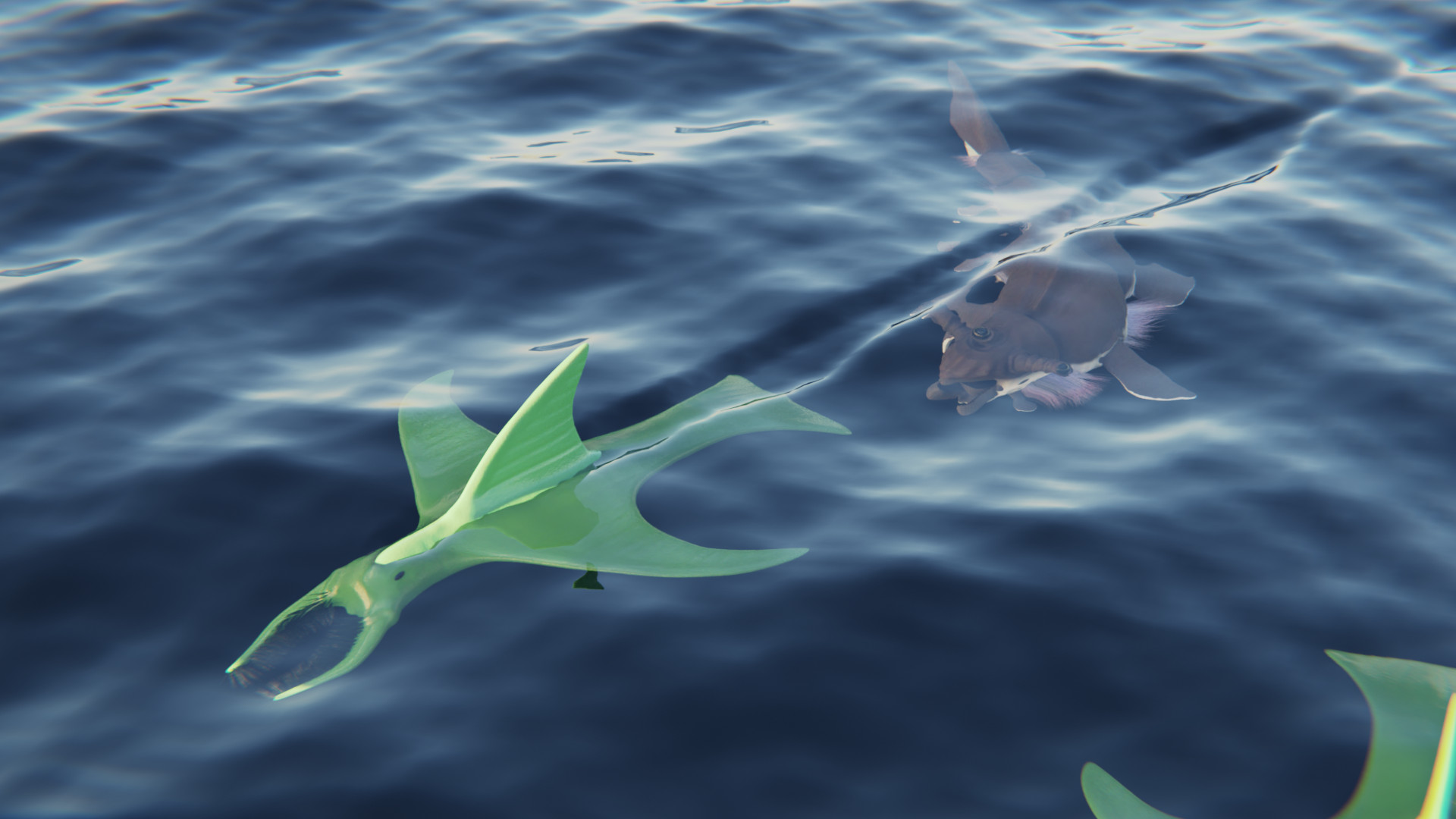Phytocetacean
Thanks to plankton numbers rebounding higher after the ocean acidification, the phytopinnipeds took advantage of that to become larger filter feeders. Pictured here a pair of phytocetaceans are pursued by one of the few creatures large enough to pose a threat to them, Xenopistris. [Creature design by 1674033]
Basic Information
Anatomy
With the phytocetaceans evolving to eat more plankton, they evolved a rudimentary blind stomach to break down food. The appendages on the front have bristles used to catch plankton in the water. Photosynthesis is still used in phytocetaceans, though it isn’t used as much due to phytocetaceans now getting 60% of their energy from plankton.
Genetics and Reproduction
Unlike their phytopinniped ancestors, phytocetaceans have a more animal-like form of reproduction. Rather than having haploids do all the work of reproduction, they instead just release gametes into the water through the ventral gonopore. These gametes, if lucky, will be fertilized.
Growth Rate & Stages
After hatching from the egg, the first stage of a phytocetacean’s life resembles the early phytozoans. These larvae are 20cm long. After spending 2 local years as a larvae, it then develops a stomach, gains swimming appendages, grows a leaf-like structure on its back, and a new ganglia grows. Now, this next stage, the juvenile, which is 1 meter long and resembles the ancestral phytopinniped, mostly relies on photosynthesis to get energy. During the next 2 years of the juvenile's life, it becomes bigger and less dependent on photosynthesis, hence why the leaf eventually becomes a dorsal fin. Now an adult, the phytocetacean spends the remainder of its life filter feeding, and it’s last year of life is also it’s mating season.
Ecology and Habitats
Makrosaetum lives south and east of Kub Shay and Yama, as well as north west of Yama.
Dietary Needs and Habits
Phytocetaceans are filter feeders, however, like their phytopinniped ancestor, do derive some of their energy from photosynthesis, though in phytocetaceans, this system of using mostly photosynthesis is getting less and less efficient. They are rather slow and swim gently in the water.
Additional Information
Perception and Sensory Capabilities
With few predators rivaling it in size, phytocetaceans like Makrosaetum became large for their time. Due to them having a planktivorous lifestyle, their eyes are not so developed, but they are still used to sense danger and get to places with lots of sunlight to photosynthesize.
EXTINCT
Genetic Ancestor(s)
Scientific Name
Makrosaetum photcetacea
Origin/Ancestry
Phytozoa
Lifespan
6.9 local years
Average Height
75 cm
Average Length
4 m
Geographic Distribution
Remove these ads. Join the Worldbuilders Guild











Comments